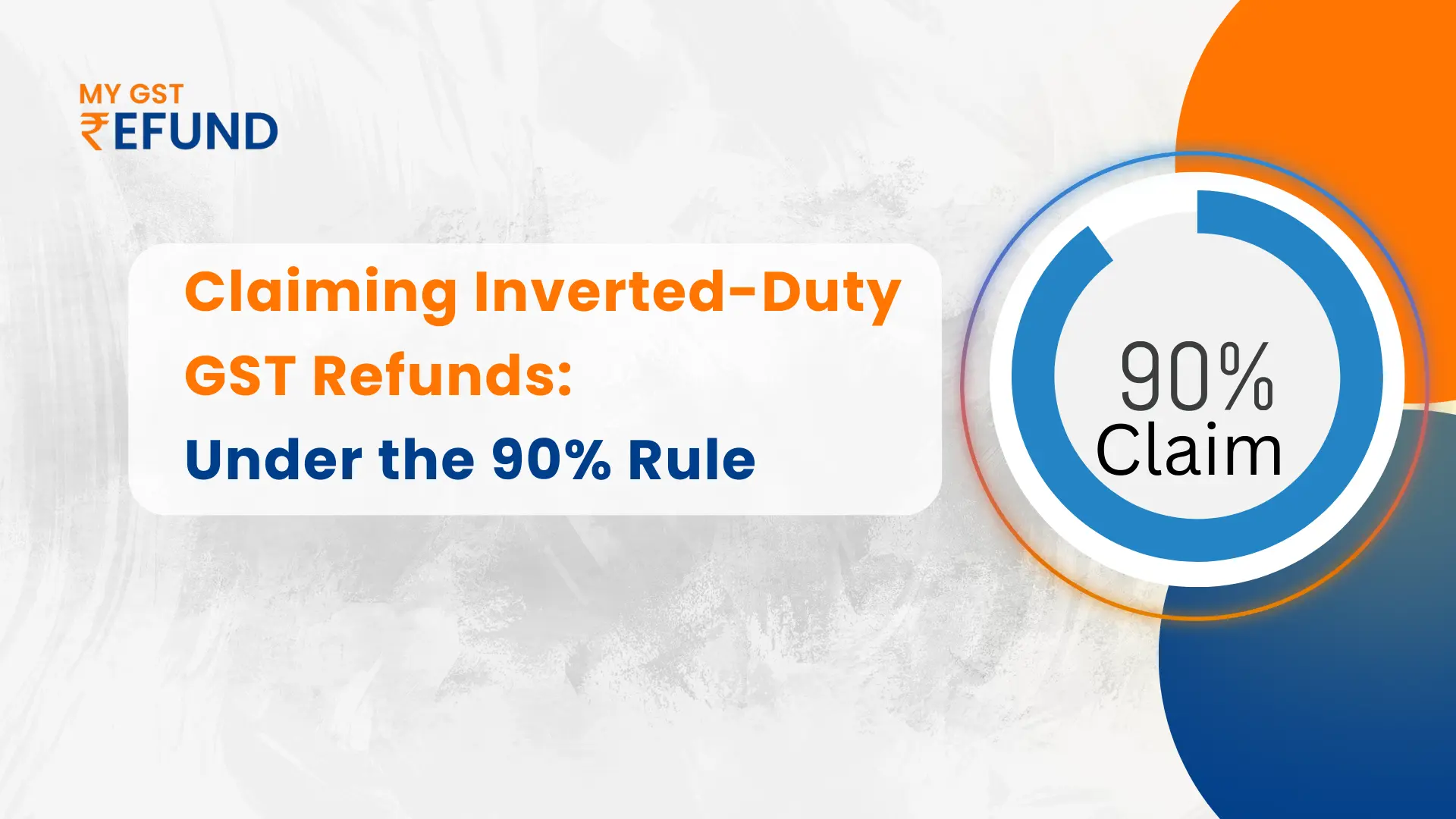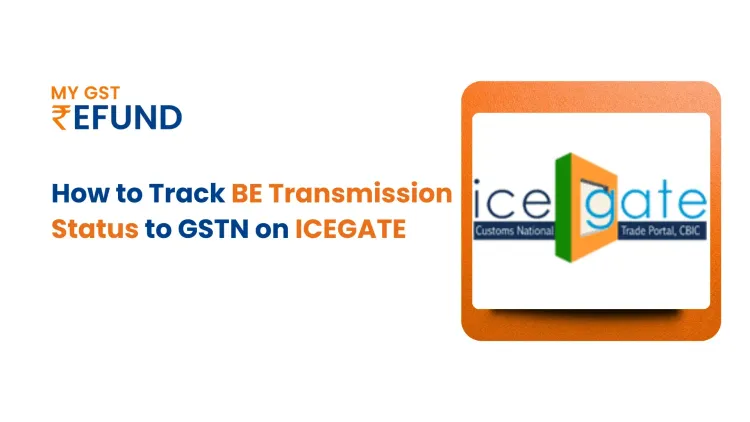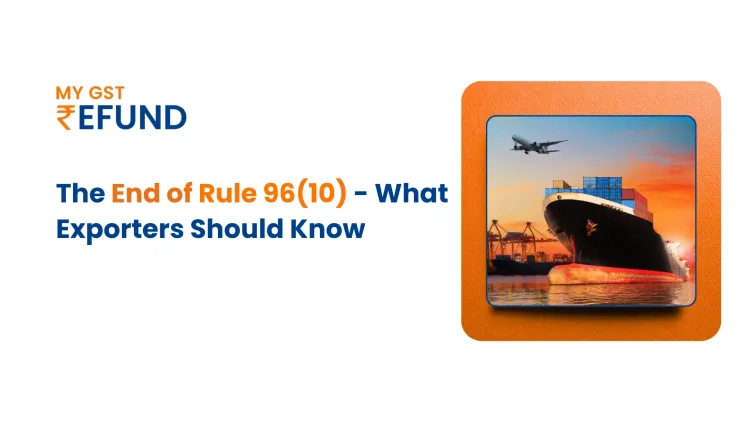Claiming Inverted-Duty GST Refunds Under the 90% Rule
Published on: Thu Sep 18 2025
Bio (Reveal/Hide)

Inverted Duty Structure (IDS)
The Inverted Duty Structure (IDS) under GST arises when the tax rate on a business’s inputs is higher than the tax rate on its outputs. This imbalance leads to the accumulation of unutilized Input Tax Credit (ITC) in the company’s electronic credit ledger.
Why does this block working capital?
Excess ITC pile-up: Purchases are taxed higher rate than sales, leaving surplus ITC.
Funds locked: Rather than being used for day-to-day operations, this unused credit remains with tax authorities.
Cash flow crunch: Businesses are forced to depend on external funding because blocked funds put a pressure on cash.
Increased expenses: If ITC is not used, then production costs rise ,which lowers the profit margins or drives up product prices.
The most impacted industries include consumer goods, footwear, textiles, and fertilizers.
The Proposed 90% Provisional Refund Rule
From November 1, 2025, the GST Council will allow businesses under IDS to claim a 90% provisional refund upfront.
Here is how it works:
Quick relief: 90% refund credited within days, not months.
System checks: Automated risk checks ensure faster, low-intervention processing.
Export model: Based on the proven provisional refund system for exporters.
Cash flow boost: Early release of funds eases liquidity stress.
Exceptions: Certain notified taxpayers may be excluded.
Disclaimer- This is a Council recommendation. The rule will be binding only after the official CBIC notification.
What Is an Inverted Duty Structure?
An inverted duty structure is what happens when a business pays more tax on its raw materials than it charges on its finished products. This creates a situation where the business has extra tax credits that it can't use up, essentially leaving its money tied up with the government.
Example
- Inputs taxed @ 18%
- Outputs taxed @ 5%
The remaining 13% credit is stuck as unutilized ITC
Why It's a Problem
This issue puts a squeeze on a company's cash flow. Think of it this way: money that could be used for daily operations is stuck with the government, which can be a big problem for a business.
Sectors Commonly Affected
- Textiles → Yarn & fibers taxed higher than garments
- Footwear → Raw materials like soles are taxed higher rate than the final footwear
- Fertilizers → Chemicals taxed higher rate than final fertilizers
- Pharma → APIs taxed @ 12–18% while medicines taxed @ 5%
Legal Provision: Section 54(3) of the CGST Act allows a refund of unutilized ITC due to IDS.
Older Refund System (Before GST 2.0)
Businesses frequently struggled with delayed payments before GST 2.0, since refunds were a difficult and manual procedure.
How It Worked
- Form RFD-01 / RFD-01A with heavy paperwork
- Physical submissions despite online filing
- Deficiency memos (RFD-03) restarting the cycle
- Manual verification by officers
The Big Problem – Delays
Although refunds were supposed to be cleared in 60 days, most businesses waited for months. Why?
Because:
- Too much manual checking.
- ITC mismatches between buyer and supplier data.
- Frequent deficiency memos for even small errors.
- No proper automation.
Impact on Businesses
Working capital stuck: ITC worth lakhs stayed blocked.
Cash flow stress: Exporters and IDS-hit sectors had no money to run daily operations.
Extra compliance: Endless follow-ups and resubmissions added to costs.
Competitiveness hit: Exporters especially lost their edge due to slow refunds.
The proposed 90% Rule Under GST 2.0
From Nov 1, 2025, a 90% provisional refund system applies to IDS claims.
How It Works
- Automatic refund → 90% within 7 days of ARN
- Balance 10% → After officer verification
- Risk-based checks → Only exceptional cases held with written reasons
Why It Matters
Quick refunds mean businesses don’t have to chase tax officers or wait months for approvals. Exporters, MSMEs, and IDS-hit sectors finally get faster access to their own money.
With predictable refund timelines, businesses can plan growth and operations more efficiently.
Rule Reference
This reform was approved in the GST Council’s 2025 decision and applies to both zero-rated supplies (exports, SEZ supplies) and inverted duty structure cases.
Eligibility Criteria for Claiming a Refund
Not every taxpayer under GST can claim a refund for unutilized ITC caused by the Inverted Duty Structure (IDS). The law sets out specific eligibility rules and conditions.
Who Can Claim
Refunds are available for GST-registered businesses that face a mismatch between input and output tax rates—meaning they pay more GST on purchases than they collect on sales.
This often happens when excess Input Tax Credit (ITC) accumulates due to higher taxes on raw materials or inputs.
Which Supplies Are Eligible
Refunds can only be claimed in cases where the GST on inputs is higher than on outputs. Common in sectors like textiles, footwear, fertilizers, and pharma.
Exclusions
- Refunds cannot be claimed in these cases:
- Nil-rated or fully exempt supplies.
- Exports are subject to export duty.
- ITC on capital goods, input services, or compensation cess.
- Certain goods/services as specifically notified by the government.
Conditions to Be Met
- For a taxpayer to be eligible for a refund, people need to:
- Check that the bills match and are balanced.
- For the appropriate tax periods, file GSTR-1 and GSTR-3B.
- To prevent inconsistencies, compare ITC with GSTR-2B.
- File a refund application using Form RFD-01 within two years from the end of the financial year.
What’s New Under GST 2.0?
From November 1, 2025, businesses get a 90% provisional refund upfront within 7 days, subject to automated checks. Certain taxpayers (to be notified) may not qualify for this provisional benefit.
Exporters can also claim refunds on small consignments shipped by courier or post, with earlier limits removed.
Step-by-Step Guide to GST Refund Claim
The GST portal has made it more simpler to claim a GST refund for ITC under an Inverted Duty Structure (IDS).
Here is a detailed procedure:
Step 1: Go to and log into the GST Portal.
Sign in with your GST credentials
Step 2: Select Refund Application
Go to Services → Refunds → Refund Application (RFD-01).
Step 3: Select the Appropriate Category
Select "Refund for ITC accrued as a result of the inverted duty structure." This guarantees that your claim is processed correctly.
Step 4: Submit Your Files
- A few items must be uploaded to substantiate your claim:
- Invoices for purchases and sales
- Returns for GSTR-1 and GSTR-3B for the particular period you are claiming
- Statement 1A (an offline form containing your ITC and turnover information)
- Purchase orders
- CA certificate if the refund is more than ₹2 lakhs
Step 5: Review and Submit
Verify all the information, check the declaration boxes, and submit using EVC or DSC.
Step 6: Receive Recognition
An Application Reference Number (ARN) will be sent to you via email and SMS following submission. This attests to the official registration of your claim.
Step 7: Get a Provisional Refund of 90%
Ninety percent of your return is credited under GST 2.0 within seven days of the ARN being generated. This makes it easier for firms to access their money quickly.
Step 8: Complete the Refund of the Balance of 10%
When the tax officer checks your claim and verifies all the information, the remaining 10% will be credited to your account.
- Make sure your invoices, refunds, and checks are already prepared before applying.
- This will eliminate the delays and it will speed up both initial and final refunds.
Required Documentation for GST Refund Claims
It is essential to have the correct documentation ready to submit a refund claim under an Inverted Duty Structure (IDS). These records facilitate the GST officials' verification of your claim and will also speed up the issuance of your reimbursement.
What you need is as follows:
- Tax Invoices of Inputs and Outputs
Input invoices: These are the bills you receive when buying raw materials or services. They are essential to claim Input Tax Credit (ITC).
Output invoices: These are invoices for the goods or services you sell. They show how much GST you collected from your customers.
Statement 1A
Statement 1A provides a summary of all inward (purchases) and outward (sales) supplies for the period.
GSTR-2B Reconciliation
The GST portal provides the static monthly ITC statement, which is known as GSTR-2B.
By taking this step, you can avoid mistakes, penalties, and it makes sure that your ITC claim is accurate.
Proof of Tax Payment
Show evidence that GST on purchases has been deposited with the government.
This includes challans from the GST portal or entries from your electronic cash ledger.
Most Common Errors to Avoid When Filing for a GST Refund
Avoiding many common mistakes, which often result in delays or denials, can make it simple to claim a GST refund under an Inverted Duty Structure (IDS).
Here are some GST refund mistakes to avoid:
Wrong HSN/SAC Codes
If the incorrect code is used, then the GST rate may be applied incorrectly, which could result in penalties or denied refund requests.
Tip: Use GST-compliant accounting software that will directly assigns the relevant codes or double-check codes on the GST portal.
Mismatch in GST Returns
Claim refunds are compared to your GSTR-1, GSTR-3B, and GSTR-2B:
GSTR-1 vs. GSTR-3B: Sales are reported on GSTR-1, while tax payments are summarized on GSTR-3B.
GSTR-3B vs. GSTR-2B: GSTR-2B shows ITC available from suppliers. Claiming more ITC than reflected here can block your refund.
Tip: Reconcile your purchases and sales carefully before filing.
Claiming Refund for Ineligible Goods/Services
Not all inputs qualify for IDS refunds. Claiming ITC on exempted or “blocked” goods/services can lead to penalties.
Tip: Stick to items where input tax is genuinely higher than output tax, and check for exemptions in the CGST Act.
Missing Supporting Documents
Incomplete documentation is a top reason for refund delays. Your claim may be delayed if there are some missing invoices, statements, or proof of payment.
Tip: It's important to keep track of payments, bank challans, Statement 1A, and purchases.
How does the 90% Provisional Refund Rule benefit businesses
The 90% provisional refund rule under GST is revolutionary, especially for exporters, MSMEs, and businesses who is facing an inverted duty structure. By releasing most of the refund quickly, it also reduces the cash flow pressures and also builds the confidence in the GST system.
Let's discuss the main advantages:
1. Faster Liquidity for Businesses
One of the biggest advantages is improved cash flow. Waiting for a full refund used to tie up significant funds for months. With 90% of the refund released quickly:
2. Businesses can get working capital more quickly
The manufacturers and the exporters can invest in the raw materials or in the operations without thinking about their finances.
3. Reduced Litigation and Disputes
The rule makes the refund processing system-driven and automated, minimizing manual errors and delays. This leads to:
- Fewer disputes between taxpayers and tax authorities.
- Faster resolution if discrepancies arise.
How Exporters Benefit from MyGST Refund under the 90% Rule
- Quick Cash Back
Exporters usually wait months for refunds. But with this 90% rule, most money comes back in about 7 days.
- Easy Online Filing
Refunds can be claimed on the MyGST Refund website. Data comes directly from GST returns.
- Less Waiting time
Only 10% of refund are checked later.
- Lower Costs
Faster refunds mean less need for bank loans, and it also saves interest and improves cash flow.
- Fair & Fast
Genuine exporters get refunds without delay.
The key takeaways
The 90% provisional refund rule is a proposed reform, not yet operational. If it is implemented as planned from November 1, 2025, it will improve the cash for businesses under IDS, and will reduce delays, and also it will simplify the compliance.
The 90% provisional refund rule under GST is a major boost for businesses affected by the inverted duty structure. The majority of the return is paid in advance, which improves the working capital, and also reduces the delays, and increases the confidence in the GST system.
Disclaimer: This rule will be effective from November 1, 2025, as per recommendations of the GST Council in its 56th meeting.
Frequently Asked Questions
Q1. What is IDS?
It’s when GST on raw materials is higher than on finished goods. This leaves an extra tax credit stuck with the government.
Q2. What is the 90% provisional refund?
You can get 90% of your refund quickly, within 7 days. The remaining 10% comes after verification.
Q3. How is the refund calculated?
Refund = (Turnover × ITC ÷ Total turnover) – Tax payable on supplies.
Q4. How long to get a refund?
Currently: up to 60 days (often delayed).
90% provisional: ~7 days
Final 10%: after verification
Q5. Why file on time?
Filing on time means you get your refund faster, avoid stress, and it keep your cash flow smooth.
Related Posts





